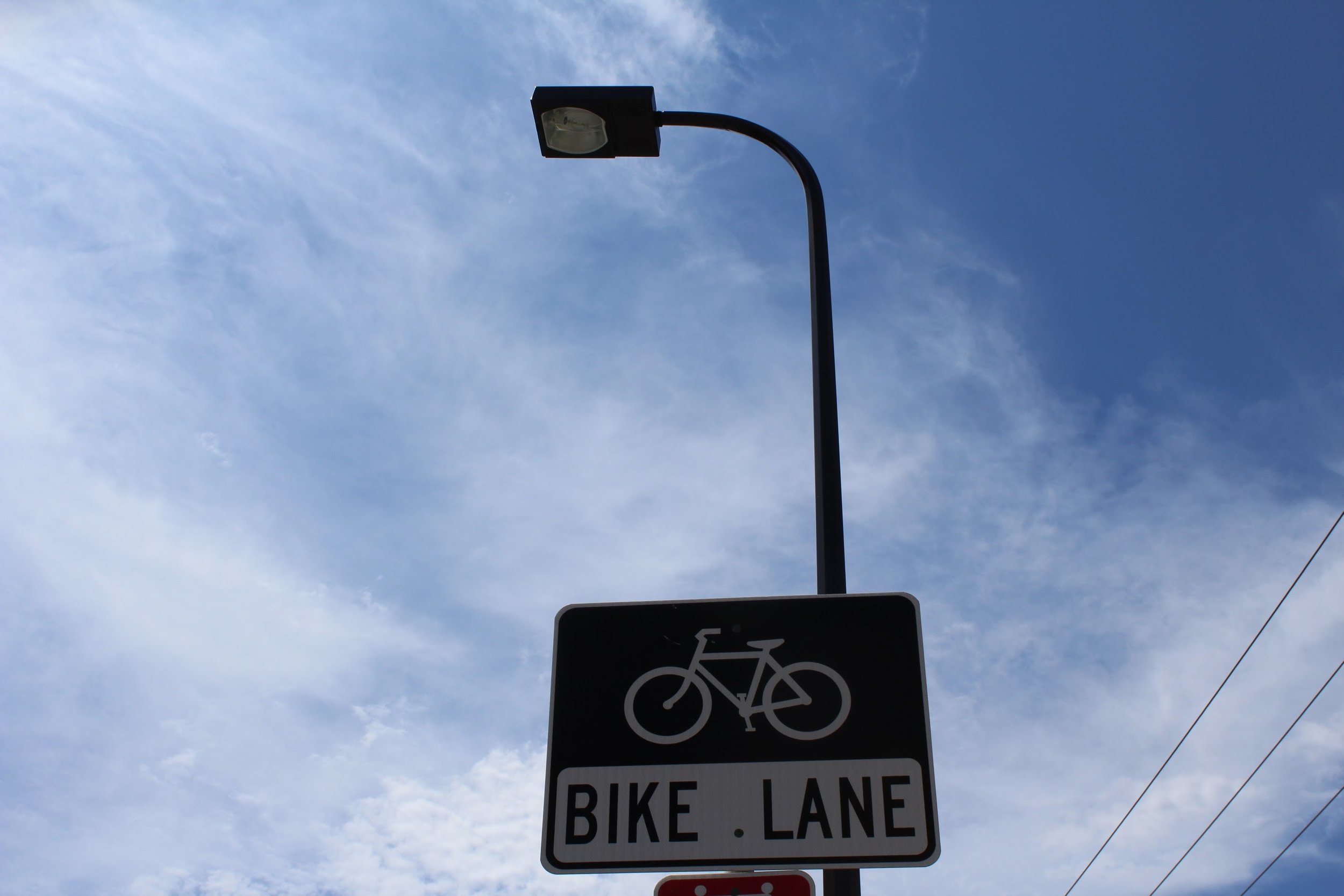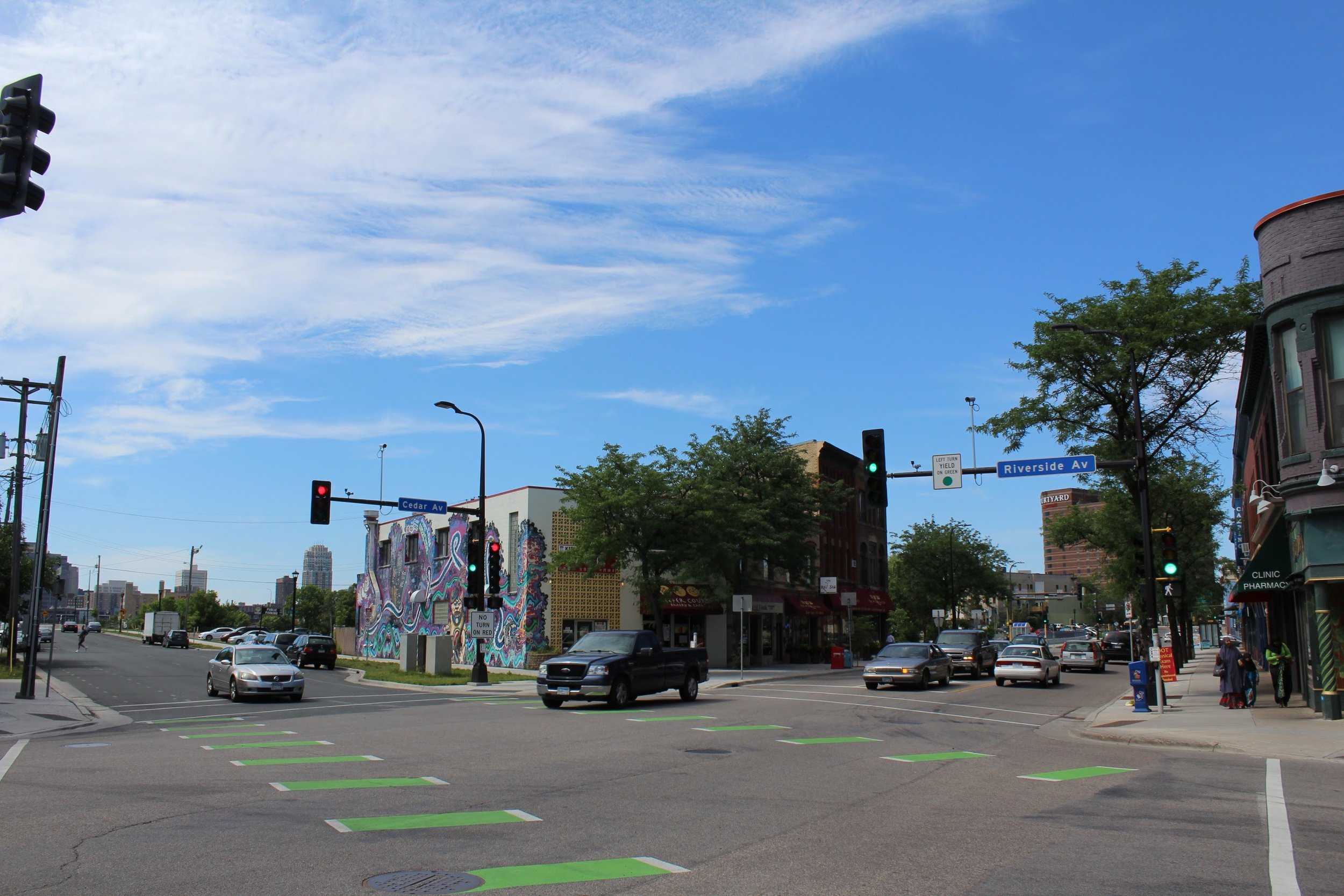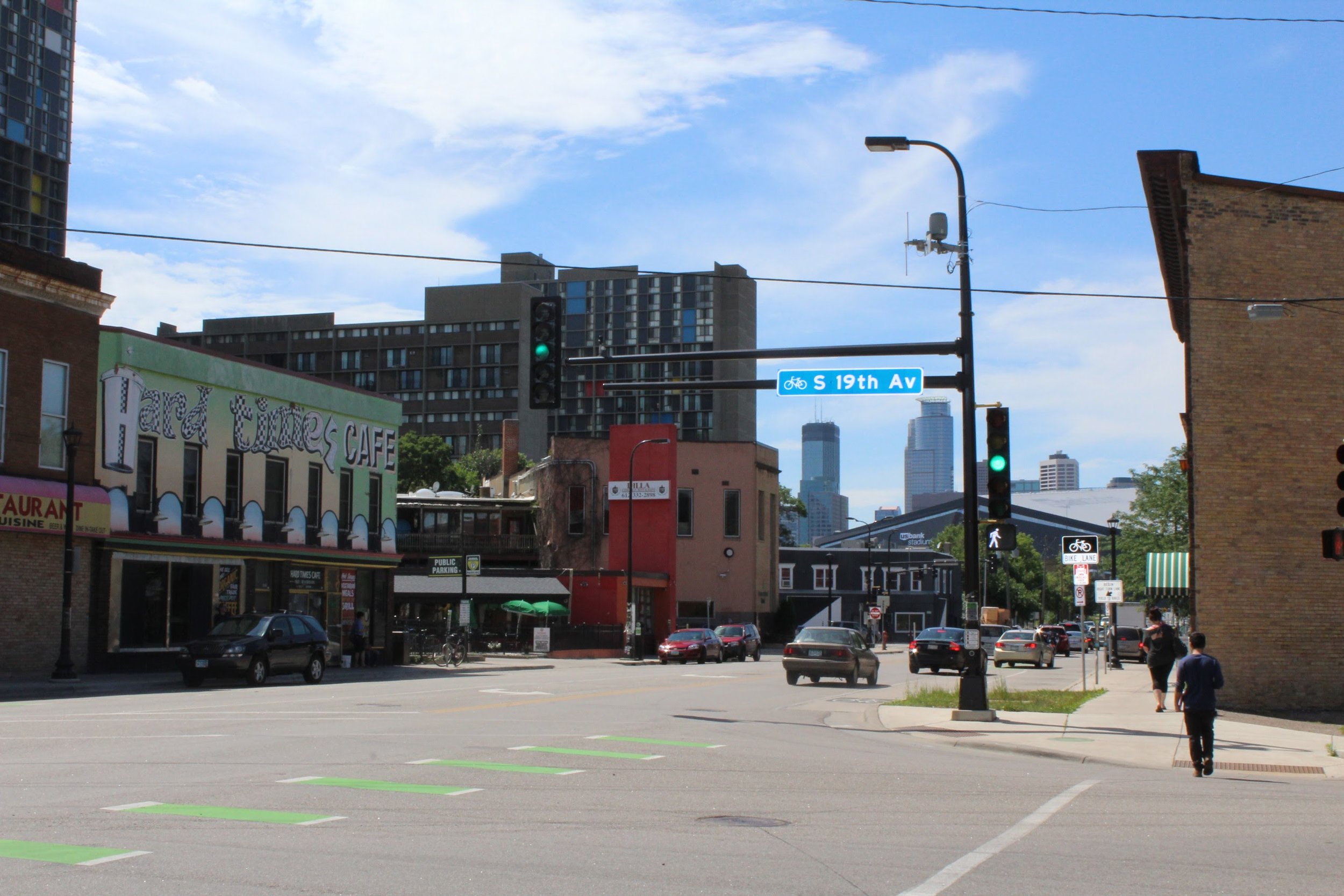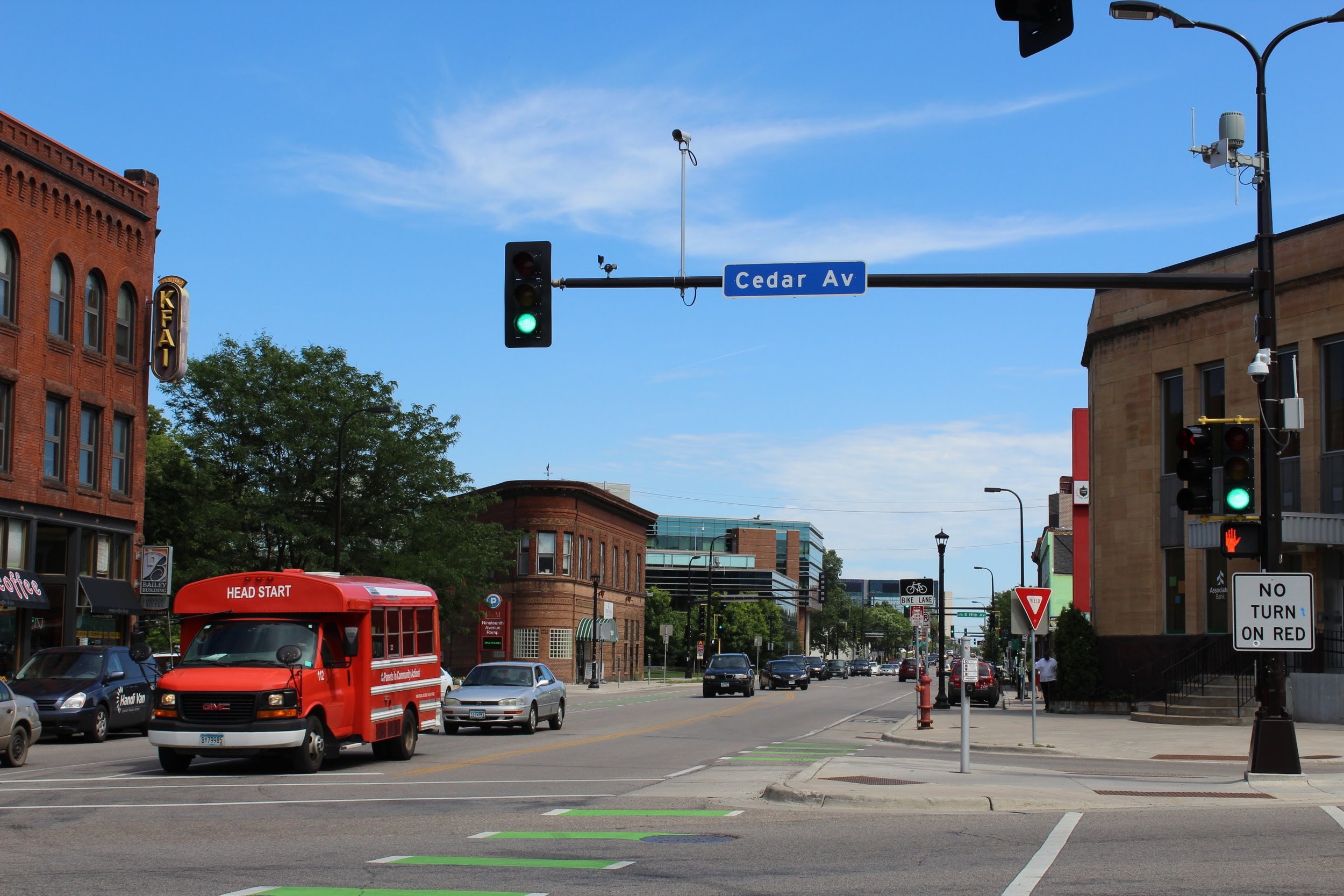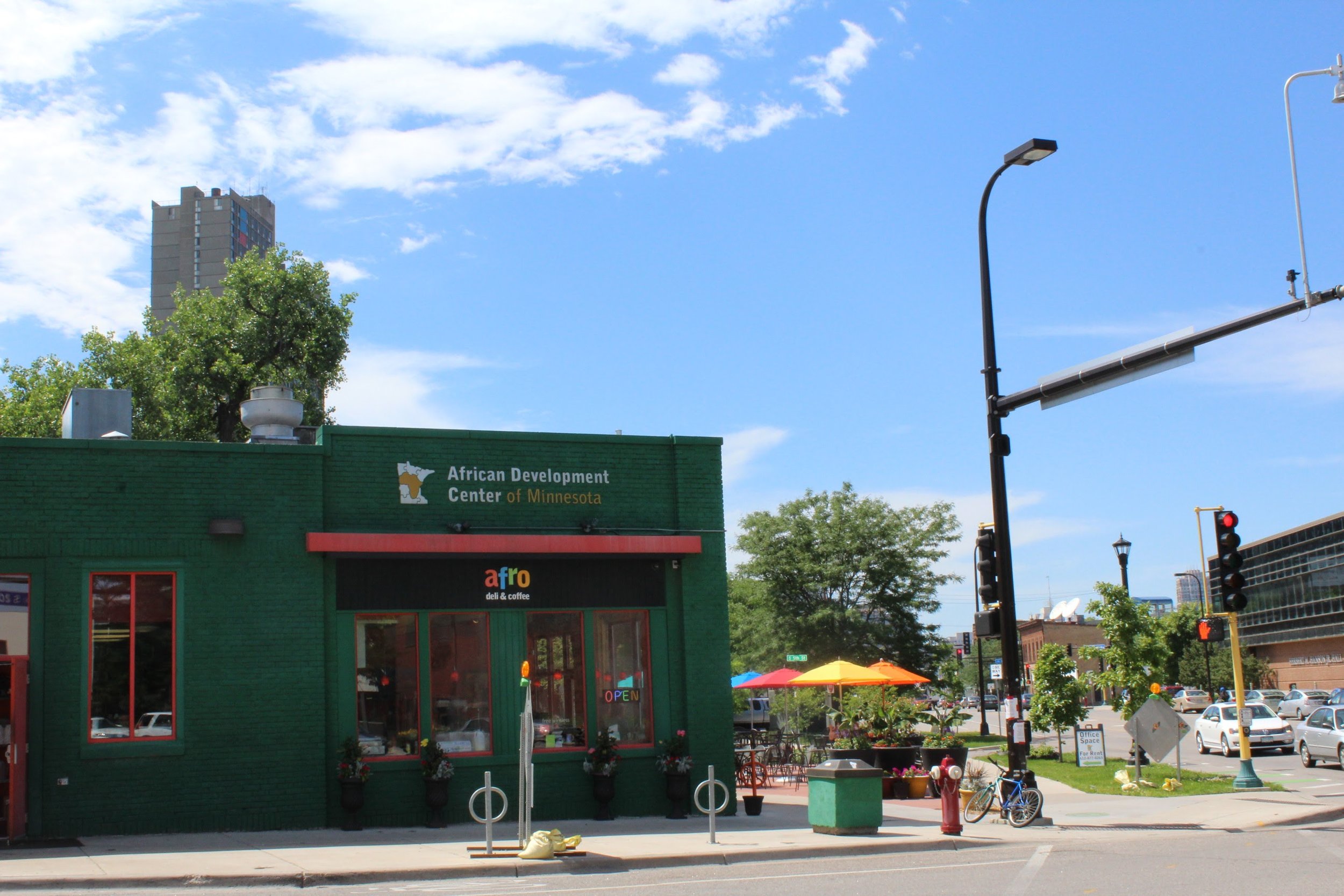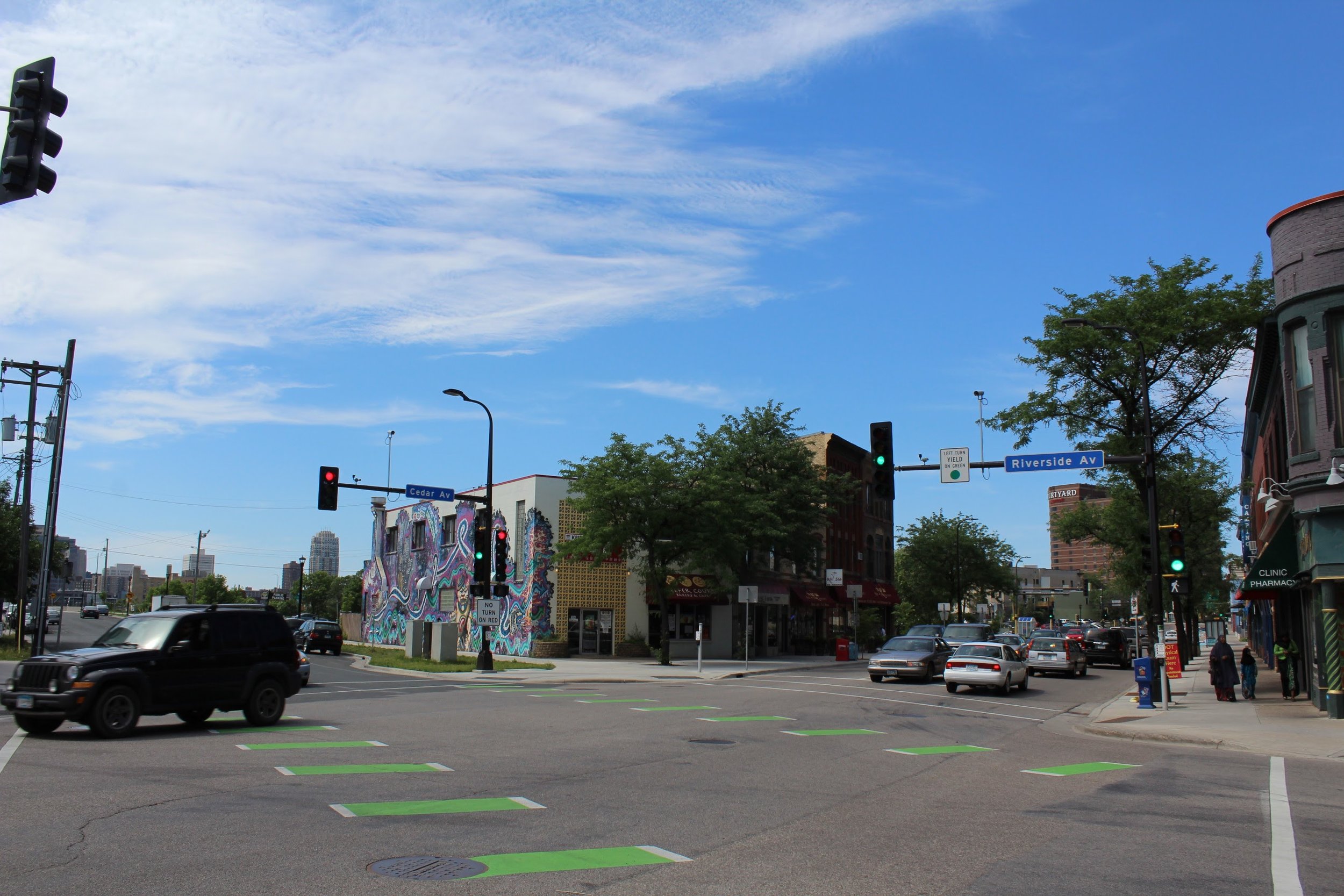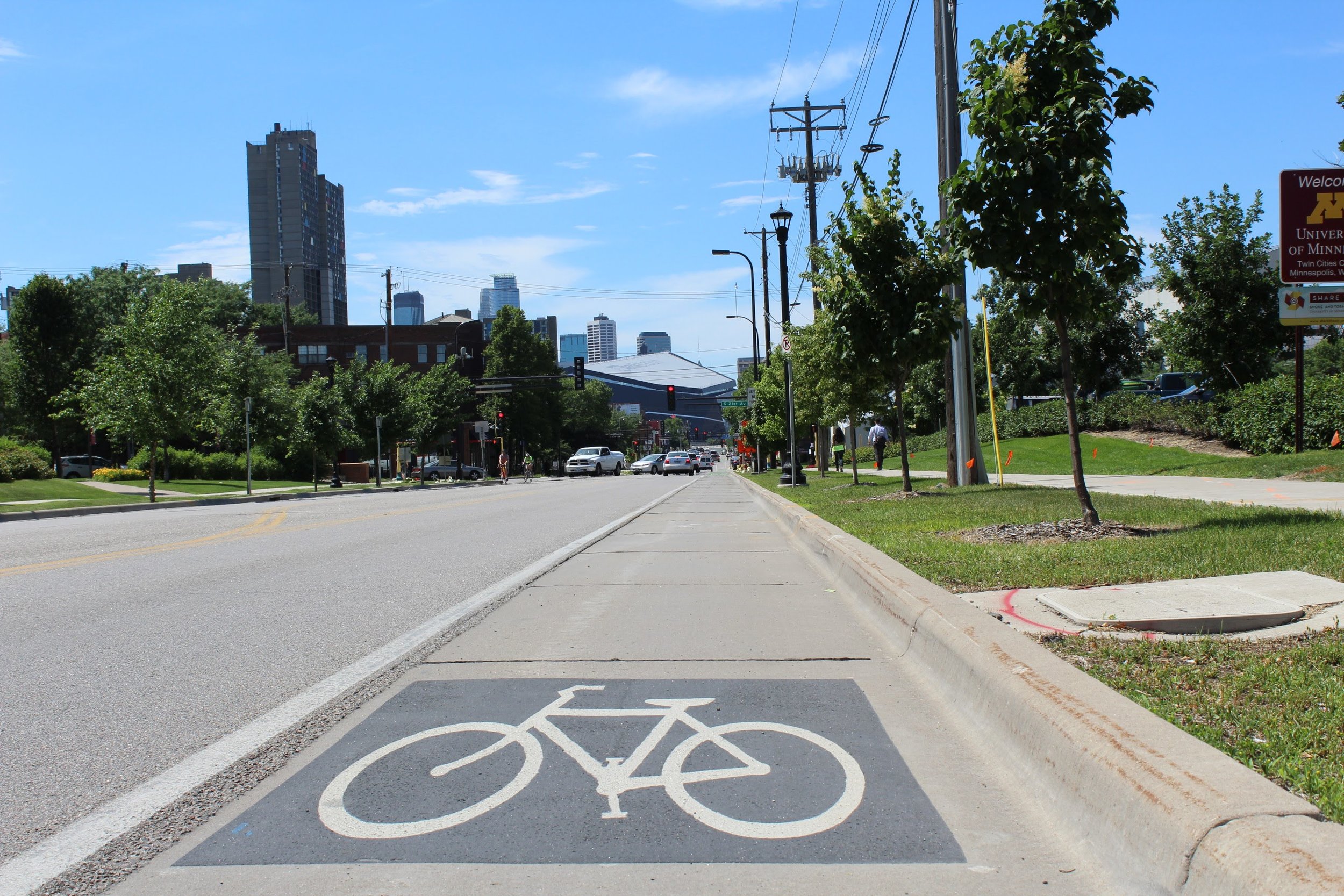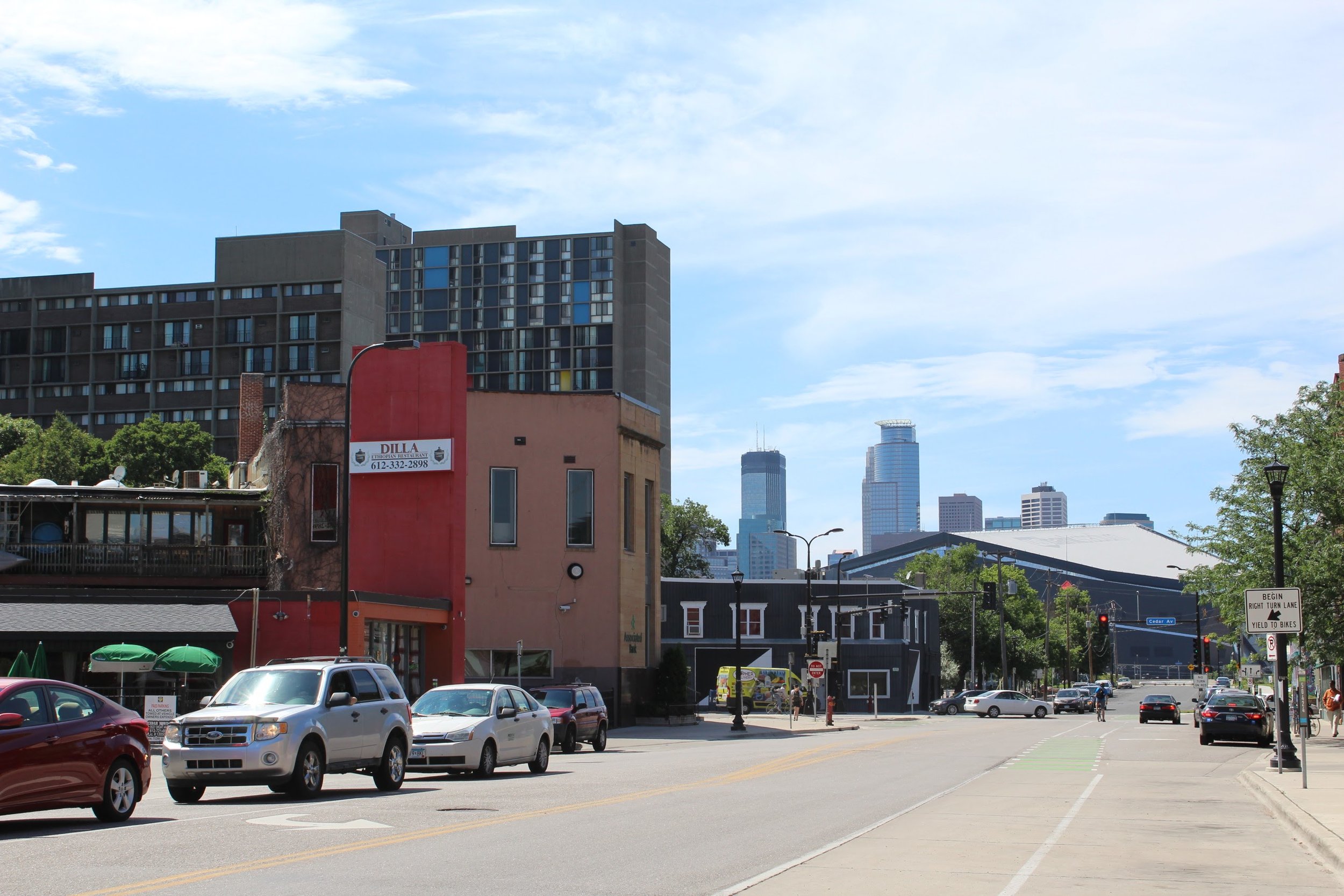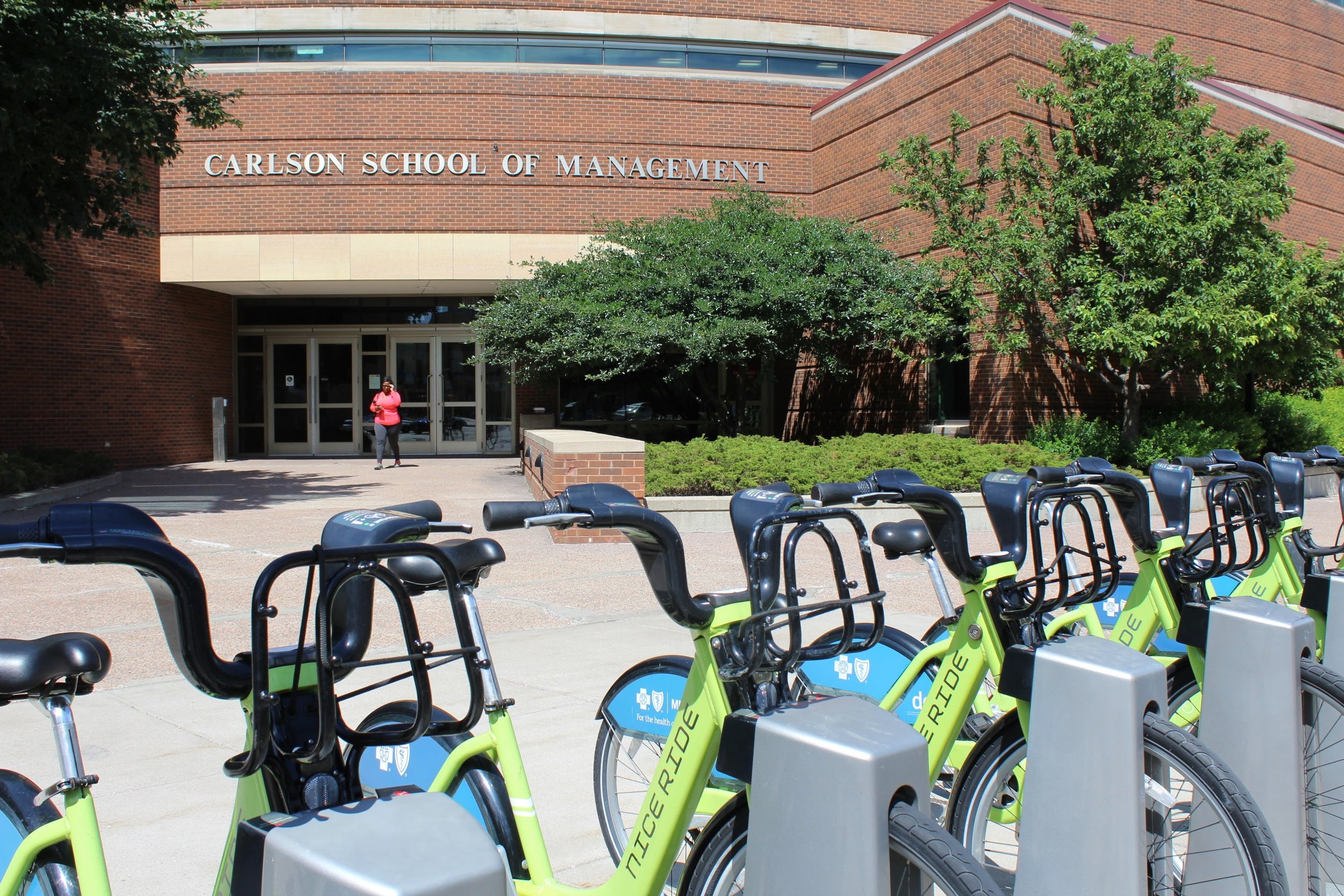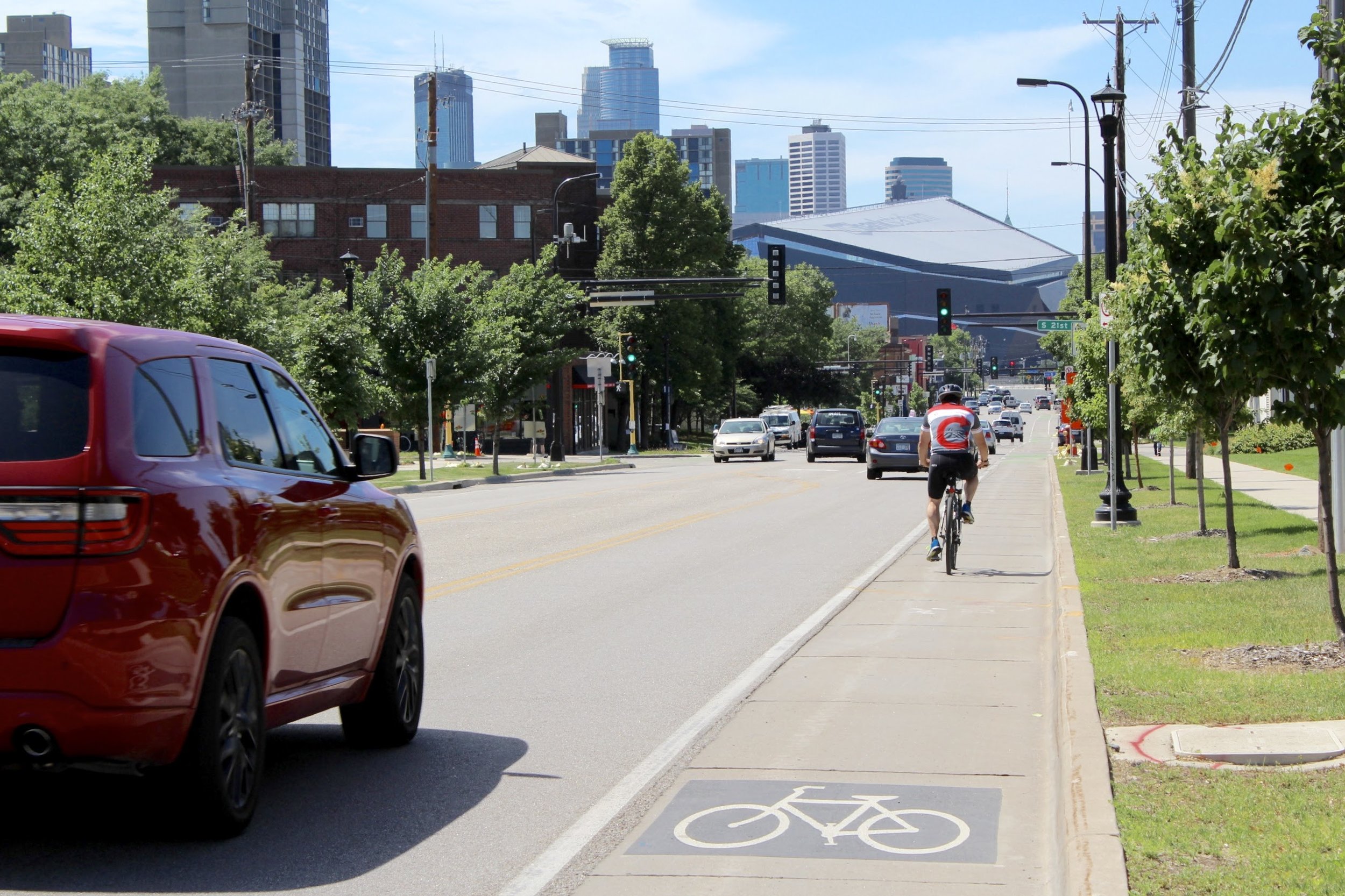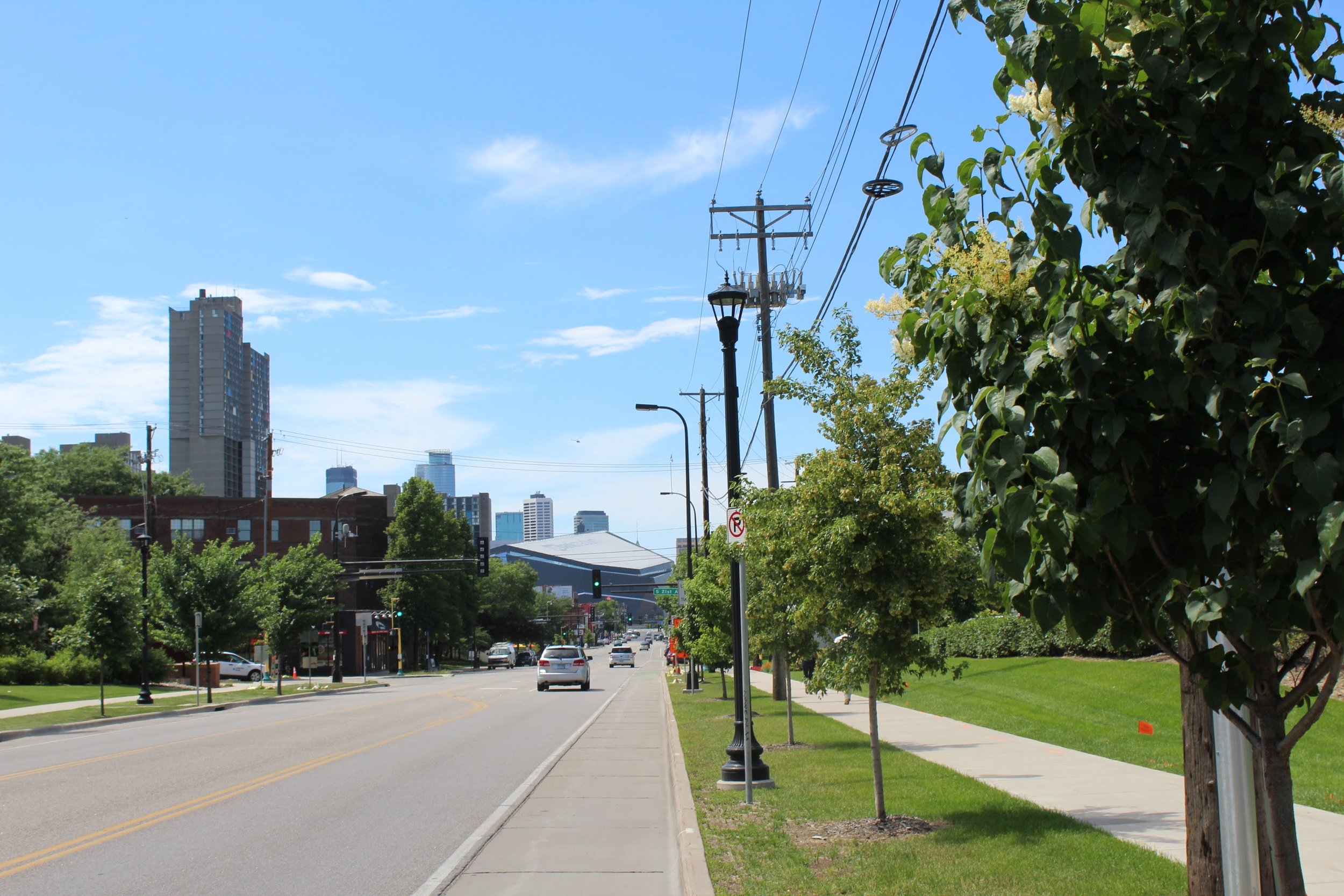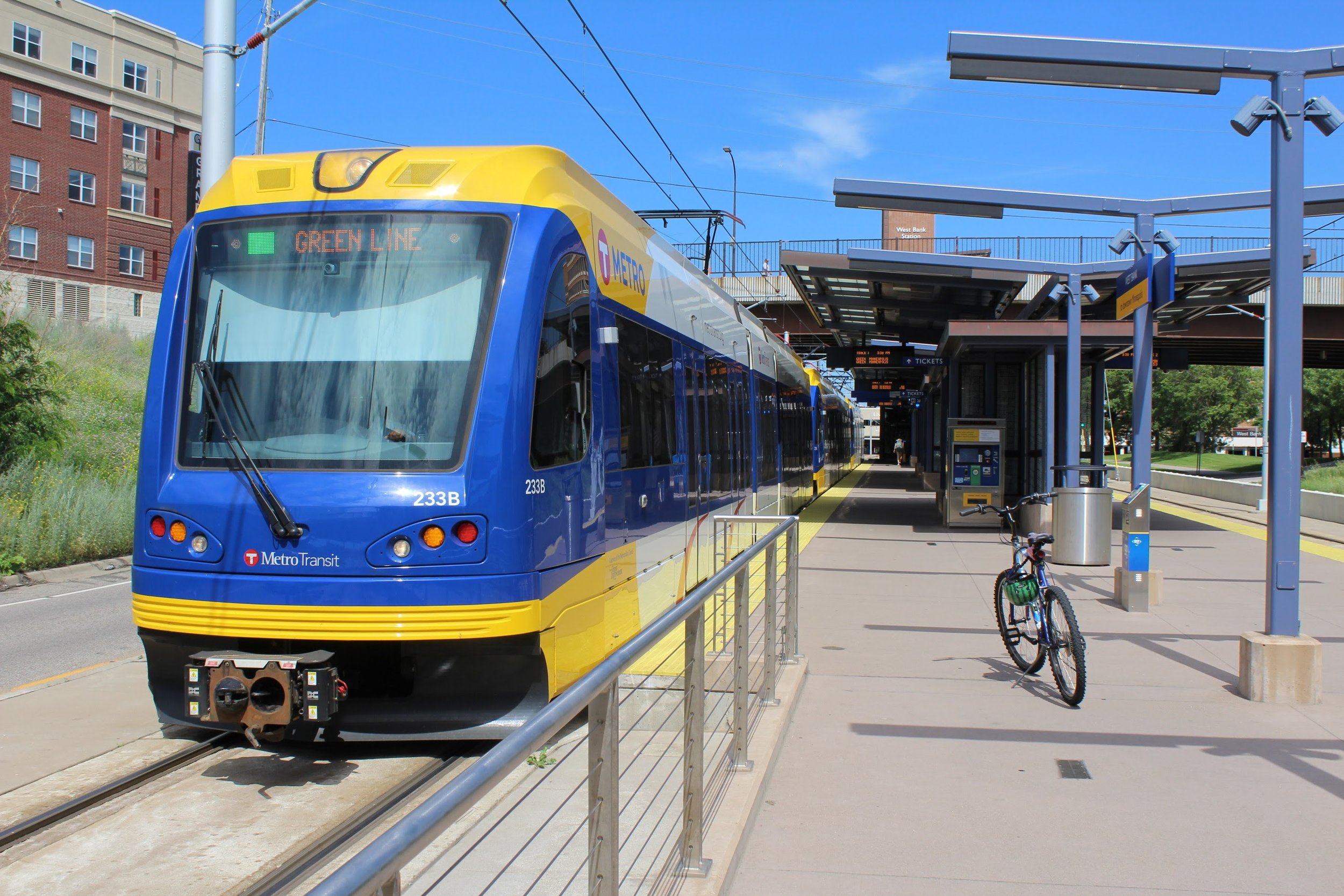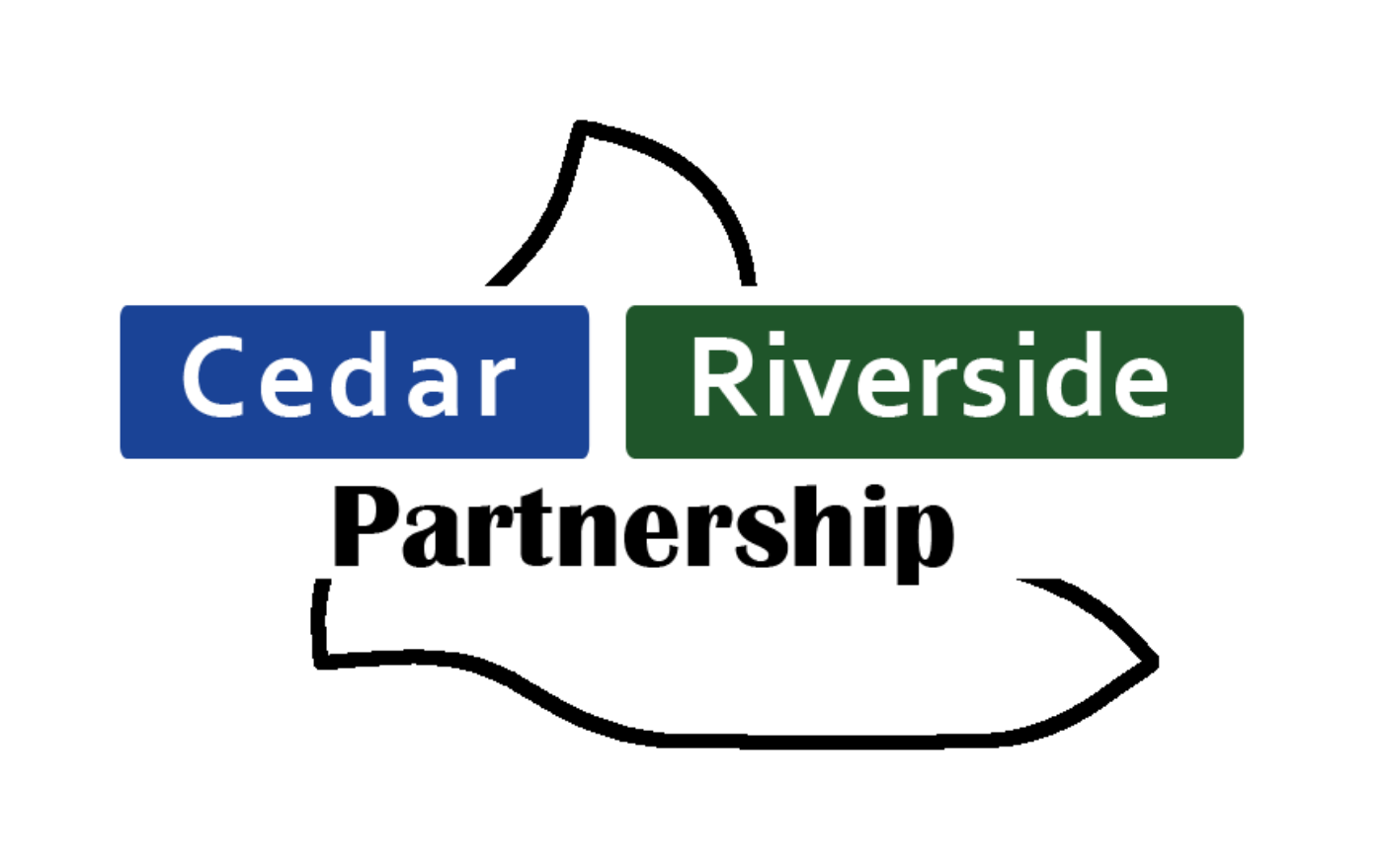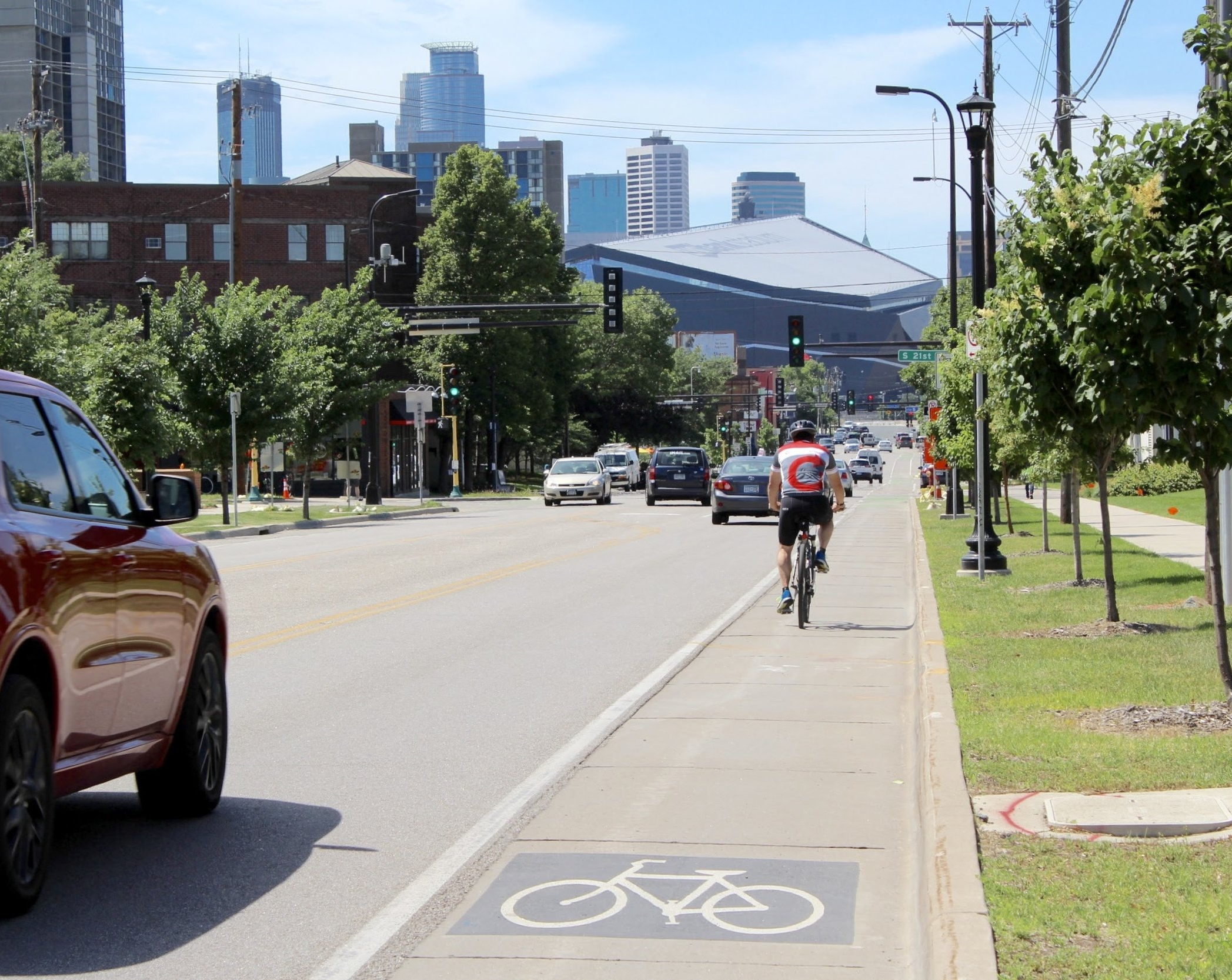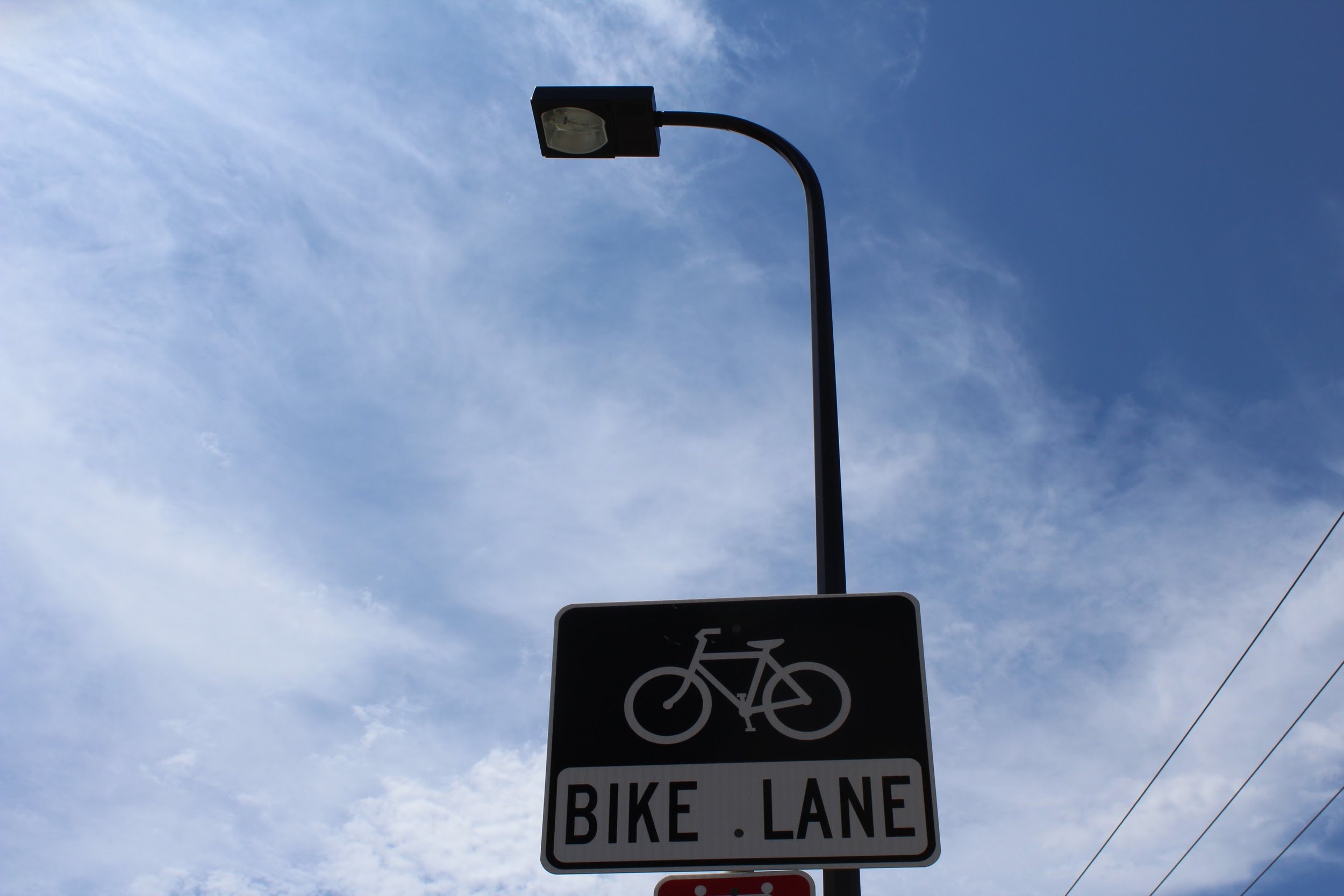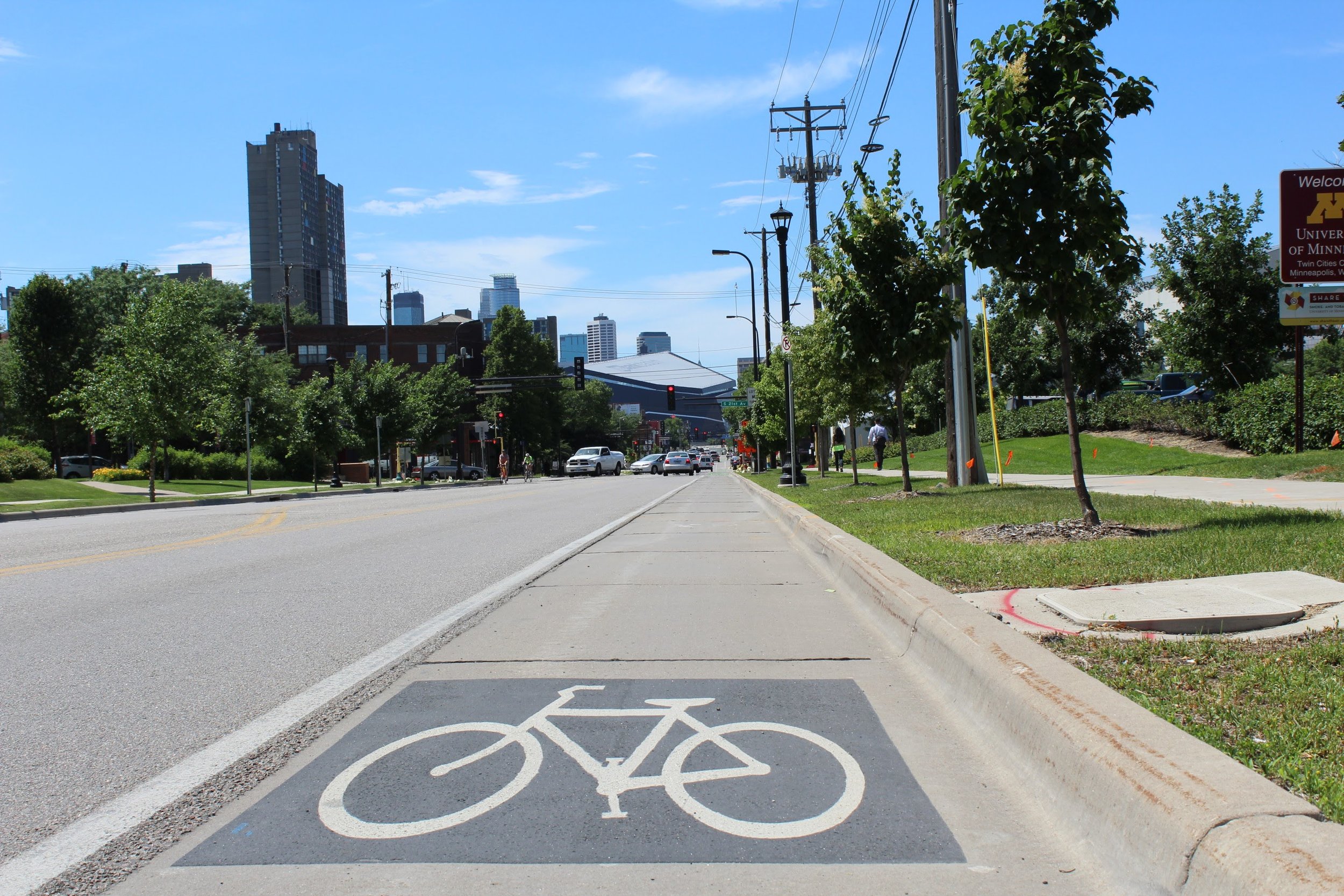Pro-bicycle Planning
In 2007, the City of Minneapolis adopted the Cedar Riverside Small Area Plan, which included the following goals: improving “the condition, quality, accessibility, and safety of existing pedestrian and bicycle routes when possible;” “construct[ing] additional bicycle and pedestrian facilities where needed to create a more complete and connected network;” and “explor[ing]options to connect public bicycle and pedestrian paths to internal bicycle and pedestrian systems within large development and institutional campuses (e.g. University of Minnesota, Fairview Hospital, Augsburg College, Riverside Plaza).”
Incorporating Bicycle Space into the Riverside Ave Streetscape
In 2010, the City of Minneapolis was engaged in planning for the reconstruction of Riverside Avenue, which included an effort to better connect the area to its surroundings and engaging the community. Opportunities to achieve these goals included improved pedestrian and bicycle connectivity along and across Riverside Avenue to light rail stations. The Riverside Avenue redesign for bicycle space incorporated continuous five foot bicycle lanes along the entire length of Riverside Avenue, with the potential for bike boxes to be added at key intersections. The southeast-bound bicycle lane was continued for the full length of Riverside Avenue.
During this same time, several major transportation improvements were already underway toward creating infrastructure for walking and bicycling. These included the City of Minneapolis’s project to implement pedestrian and bicycle projects through the Nonmotorized Transportation Program, which set out to increase the bike/walk mode share with the goal of 150 miles of bikeways in the city by 2015; and the University of Minnesota Master Plan which prioritizes walking and then bicycling.
A clear need for Bike Lanes
In 2012, a CHANCE (Cedar-Humphrey Action for Neighborhood Engagement) study highlighted the needs for bike lanes around Riverside Avenue, specifically on 4th Street, 15th Avenue, and 6th Street, which community members identified as areas in need of redesign. The study recommended bike lanes and shared bike/traffic lanes, among other streetscape updates, for an improved bicyclist and pedestrian experience. The report findings strongly supported improving street conditions for both bicycles and pedestrian traffic. The West Bank Community Coalition reported the study’s recommended that more speed bumps be incorporated on 15th Avenue South and flashing lights be posted at the pedestrian crossing at 15th Avenue and 4th Street.
Samatar Crossing
Samatar Crossing, also known as the Fifth Street Reconnection project, was designed to reconnect 5th Street Southeast between 11th Avenue South, near U.S. Bank Stadium, and 15th Avenue South via a multi-purpose vehicle road, pedestrian walkway, and bike lane. The purpose of Samatar Crossing is to create a local connection between downtown Minneapolis and the Cedar Riverside neighborhood.
In 2014, the Minneapolis Mayor’s recommended budget allocated $500,000 in general funds to a West Bank Interconnect Project to examine proposed transportation alternatives for the West Bank corridor. In light of community concerns related to increased traffic to the neighborhood that the new roadway would bring, the Minneapolis Public Works Department redrew street designs to address pedestrian safety issues and other concerns. The project includes a protected bikeway as well as an enhanced pedestrian walkway.
Gallery: Bike paths
